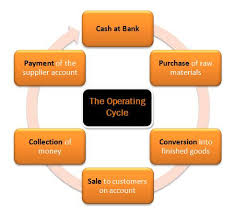After discussing about what requirements engineering is and the activities it involves. We moved forward to Requirements Elicitation which is part of Requirements definition. Now, we will discuss about the techniques involved in Requirements Elicitation.
1.CORE(Controlled Requirements Expression):
- To start with, CORE is the first technique used to accomplish the task of requirements elicitation. It is a requirements elicitation, analysis and specification method developed in late 1970’s and refined during early 1980’s.
- It is a viewpoint based technique. A specific system is viewed from number of viewpoints and the principle behind CORE is that a complete picture of system requirements can only emerge by putting together these various viewpoints.
- In CORE viewpoints help in initial data gathering and also this technique involves analyzing what data is produced or consumed by each viewpoint.
2.IBIS(Issue Based Information System):
- IBIS is a methodology developed by Horst Rittel in early 1970’s. It mainly focuses on understanding the documentation of the rationale behind the requirements.
- Often during software development, there are various conflicts or problems involving stakeholders , each with different opinion. In this case IBIS comes as an aid. It provides a platform for resolving issues,gathering requirements,solving pending issues as well as documenting the rationale behind the requirements.
- Under IBIS the principle is that whenever there’s a conflict , it has to be expressed again as a question so that it can be discussed under the framework again.
- This technique thus allows, easy identification of issues not yet discussed.
3. FODA(Feature Oriented Domain Analysis):
- A good understanding of the requirements can be obtained by visualizing the requirements from domain point of view. We can review existing domains and abstract and refine the underlying features under it to gather domain knowledge.
- FODA is a very popular domain analysis methodology and it was introduced by The Software Engineering Institute in 1990.
- In this the designers work along with domain analysts and users to obtain the requirements definition.
- The technique is thus very much iterative and the domain analysts can interview the users for requirements elicitation.
In the next article we may focus upon some more techniques under Requirements Elicitation.
Click here for government certification in Information Technology





9 Comments. Leave new
Nicely written 🙂
Well described.
Good effort!
Good work!
Nice.
Very Well Explained 😀
loved your last 2 part of the same 😀
Was waiting for this 😀
Simply Awesome 😀
Nice
Perfectly written
Well articulated!